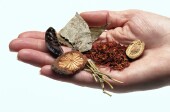
THURSDAY, April 12 (HealthDay News) — DNA analysis of traditional Chinese medicines that were seized by Australian customs officials revealed that many contained plant ingredients in quantities and combinations that could have produced allergic or even toxic reactions among consumers.
What’s more, the high-tech investigation unearthed evidence that some of the medicines also contained animal parts from species that have been officially recognized as either vulnerable, endangered or critically endangered.
“When you buy a food product at the supermarket, whether it is locally grown or imported, you expect that the manufacturing standards are high, that the product is safe and that the ingredient list accurately depicts what is in the product,” suggested study co-author Michael Bunce, from the Australian Wildlife Forensic Services and Ancient DNA Laboratory within the school of biological sciences and biotechnology at Murdoch University in Murdoch, Australia. “Surely the same, or greater, level of regulation is expected of herbal medicines?” he added.
“A DNA audit of the 15 traditional Chinese medicine samples revealed that this is not occurring,” Bunce noted. “Put simply, there are illegal ingredients and the products do not accurately declare their ingredients.”
Bunce and his colleagues report their findings in the April issue of PLoS Genetics.
The authors noted that as interest in alternative and complementary medicine has grown in recent decades, the Chinese medicine industry has exploded and generates hundreds of millions of dollars.
But until recently, scientists have had difficulty trying to accurately analyze the ingredient lists of all the varying powders, tablets, capsules, flakes and herbal teas that make up the Chinese medicine market.
Enter DNA sequencing technology.
Armed with the latest technology, the Australian team focused its attention on 15 samples that were seized by the Australian Customs and Border Protection Service and the International Wildlife Trade Section. After testing, the scientists determined that none of the samples carried accurate ingredient labels.
In all, 68 plant families were identified, sometimes in complex combinations. Included among them were a number of potential allergens, as well as Ephedra and Asarum, both of which can prove toxic in excessive dosages.
Ingredients from four different animal families were also unearthed, including illegally obtained parts from protected species such as the Asiatic black bear and the Saiga antelope.
“There is a lot of debate about the efficacy of [Chinese medicines] and other herbal medicines,” Bunce said. “[But] this research is not about efficacy. It is about accurately and honestly labeling products,” he explained.
“We would argue that it is manifestly obvious that herbal medicines need to be carefully evaluated for legality, [and] accurate disclosure of ingredients and pharmacologic activities,” Bunce added. Routine DNA testing could go a long way towards putting manufacturers and importers “on notice” to accurately label their products, he suggested.
Lona Sandon, an assistant professor of clinical nutrition at the University of Texas Southwestern Medical Center at Dallas, suggested that the findings speak to the broader issue of dietary supplement safety in the United States.
“First of all, although the traditional Chinese medicine products this study looked at may not be openly sitting on American store shelves, in this day and age you bet you can get them on the Internet,” she cautioned. “So, the argument that it’s not an issue in the U.S. is a bad one.”
But also, Sandon added, “just like these traditional medicines, dietary supplements that are openly sold in the U.S. are not like drugs. They do not have to undergo the scrutiny of testing for safety, for efficacy or for purity that would show that what the manufacturers say is in the product is truly in the product, and in the amount that they say is in the product,” she pointed out.
“Now, we do have the Council for Responsible Nutrition, which is a supplement industry trade group that is attempting to clean up the image of the supplement industry in the eyes of health and medical professionals,” she noted.
“But that’s just a voluntary notion that mostly appeals just to the big supplement players who want to keep a good reputation and are interested in being part of this group,” Sandon cautioned. “Lots of smaller companies may not be so ethical. And either way, the practice still has nothing to do with questions of safety or efficacy,” she stressed.
“I don’t care how many times something is touted as being natural. All the things they found in these traditional Chinese medicines were natural. Ephedra was natural, and it killed people. Natural does not always equal safe,” Sandon stated.
Council for Responsible Nutrition officials would not comment on the findings, suggesting it was inappropriate to confuse traditional Chinese medicines produced under Chinese regulations with dietary supplements manufactured in the United States.
That sentiment was shared by Mark Blumenthal, founder and executive director of the American Botanical Council.
While acknowledging that some aspects of traditional Chinese medicine formulation are “alarming and distasteful,” Blumenthal concurred that such practices are not representative of the American dietary supplement industry’s standards.
More information
For more on traditional Chinese medicine, visit the U.S. National Center for Complementary and Alternative Medicine.

